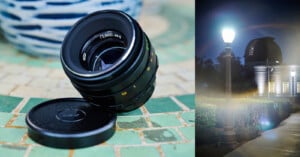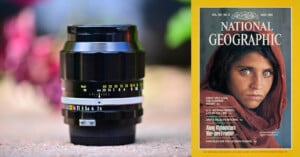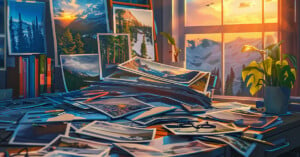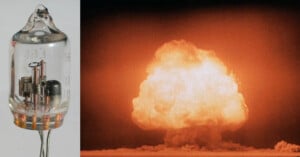
From Ukraine, With Love: The Perfectly Imperfect Lens
For as long as I’ve been behind the camera, I’ve been the type of person to chase optical perfection. LoCA, coma, and other optical artifacts are to be avoided at all costs.
John Bilbao is a photographer and cinematographer local to Los Angeles. Specializing in sports, events, and aerial imaging, his work has been featured by the likes of Porsche, Zero Motorcycles, Rodnoc Racing, Tough Mudder USA, Terra Rally Crew, Team Big Bear, and hundreds of individual athletes in motocross, the NTT IndyCar series, MotoAmerica, and Formula Drift. More than anything else, he loves the excitement of creating imagery that jumps off the screen, and sharing that excitement with others.

For as long as I’ve been behind the camera, I’ve been the type of person to chase optical perfection. LoCA, coma, and other optical artifacts are to be avoided at all costs.

As I’ve collected more and more camera equipment, especially vintage film gear, I’ve amassed a collection of quite a few lenses that I found for peanuts at flea markets, thrift, and antique stores, or online through marketplaces like eBay.

If you had told me four years ago that Nikon would not only be in the business of making true, honest-to-goodness video gear but would also own what is arguably the most disruptive player in the truly professional, Hollywood-production-ready market, I would probably have laughed in your face.

For some people, a car or a motorcycle is nothing more than a method of getting from point A to point B. It is a tool, an instrument, something that serves a purpose and nothing more.

If you, like me, are prone to idly perusing the catalogs of your favorite camera store searching for the next bit of kit to add to your collection, you’ve probably stumbled into the “Professional Video” section and been absolutely bowled over by how much money one can spend on literally anything in this category.

When shooting on a digital camera, it’s considered fairly standard practice to shoot in a raw format or raw + JPEG. The reasoning for this is simple: shooting in a raw format like Nikon’s .NEF, Canon’s .CR3, or Sony’s .ARW will record the full, unprocessed, unadulterated data from your camera’s sensor, preserving as much dynamic range and detail as possible allowing you maximum flexibility in post to push and pull the image before exporting it as a JPEG or PNG.

3D printers open up entire new vistas of creativity for photographers. Whether you’re into cosplay and creating costumes and props for your portraits or looking to achieve original shots using intricate rigging and mounting setups that are entirely bespoke to your use case, the ability to take a spool of plastic fiber and turn it into a complex and durable part using an appliance that can fit on a benchtop is, in my opinion, one of the most exciting advancements in the at-home maker movement in years.

About a week ago, I caved in and decided to spring for one of those huge, high-power USB-C power delivery hubs that have sprung up in the past couple of years.

In 1984, during the height of the Soviet-Afghan war, American photojournalist Steve McCurry took what is considered by many to be the most famous photo in the world. The photo, entitled Afghan Girl, depicts a then-12-year-old girl, identified in 2002 as Sharbat Gula, while she and her family were living in Nasir Bagh, an Afghan refugee camp in the Pakistani city of Peshawar.

As someone who earns a living from digital media and keeping plugged into the photographic and videographic industries, it’s only natural that I spend a lot of time cruising around on the information superhighway and frequently interacting with people all over the world on the subject of cameras and the field writ large.

When I was a freshman in high school, I signed up for a film photography class thinking it would be a good excuse to spend a good part of the school week and some homework time getting to goof around with a camera.

When I was in college at the University of Minnesota, one of my senior-year classes at the Hubbard School of Journalism and Mass Communication involved putting together a website using Wix, to hopefully allow us to showcase some of the things we had worked on during our academic careers and set us up for a (hopefully) easier time finding work afterward.

On July 16th, 1945, 35 miles southeast of Socorro, New Mexico, the White Sands Proving Ground was rocked by a massive explosion.

One of the single most worthwhile investments you can make as a photographer is paying for a bespoke website. Whether you’re a commercial assignment photographer looking to showcase your best work, a batch shooter wanting to create a home for your purchase galleries, or anything in between, an online presence outside of social media is a crucial component of any creative’s toolkit.

One of the most exciting consequences of the advancement of technology is the democratization of tools that were once reserved for big-budget productions.

Nestled in the heart of a youthful neighborhood arts district, just opposite the bustling Port of Los Angeles, lies a relatively unassuming gallery, much like any of those that surround it.

Drones are awesome. Much more than just being fun novelties you might see buzzing around your neighbor’s backyard piloted by a young child, they are amazing creative tools that allow for camera shots that you simply cannot get in any other way, and are used in everything from music videos to live sports to the biggest blockbuster films.

Photography is unique, as far as artistic media is concerned. Behind the camera, we can freeze time, turning once-in-a-lifetime moments into indelible mementos that have a good chance of outliving the gear that created them.